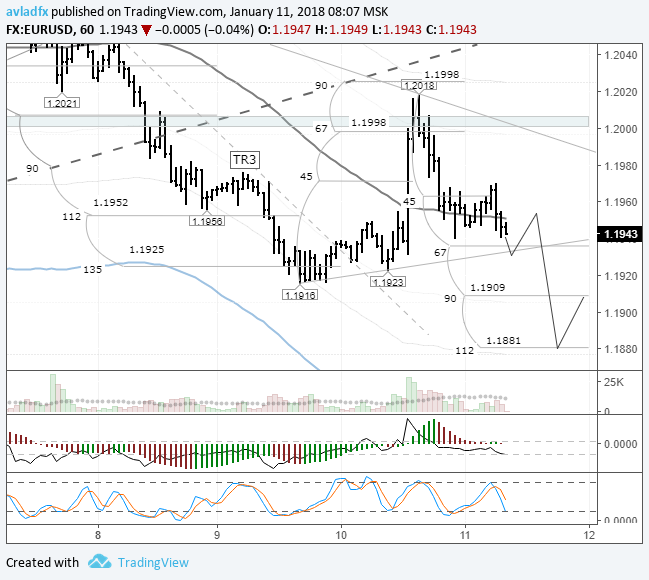Previous:
On Wednesday the 10th of January, trading on the euro closed slightly up after Bloomberg landed a blow on the dollar during the European session. The news agency reported that China is planning to reduce or stop its purchases of US government bonds.
The dollar dropped as bond yields rose due to the fact that China is the biggest holder of US debt. According to the US Treasury, China currently holds 1.189 trillion dollars’ worth of US government bonds.
The news about China sent the euro up to 1.2018 against the greenback. Since there were no official announcements from any Chinese officials, however, there was no further impetus for the dollar’s decline. In the US session, the euro dropped to 1.1941.
Day’s news (GMT+3):

Fig 1. EURUSD hourly chart.
Source: TradingView
Due to the unexpected news on China, yesterday’s predictions didn’t come off. Sellers erased yesterday’s gains, bringing the exchange rate down to 1.1941. At the time of writing, the euro is trading at 1.1952.
Considering that on Wednesday, the euro/dollar rate corrected by nearly 90 degrees, and that the rate returned to the LB balance line (sma 55), for today, I’m predicting that the euro will slide against the dollar to the 112th degree at 1.1881. To trigger this decline, the bears need to break through the 1.1930 support. At the moment, the following crosses are getting in the way of this: EURJPY, EURGBP, EURCHF, and EURCAD.
If the euro continues to trade above 1.1915 up to the 15th of January, then from Monday, I’ll be expecting the euro/dollar pair to rise again.











Leave A Comment